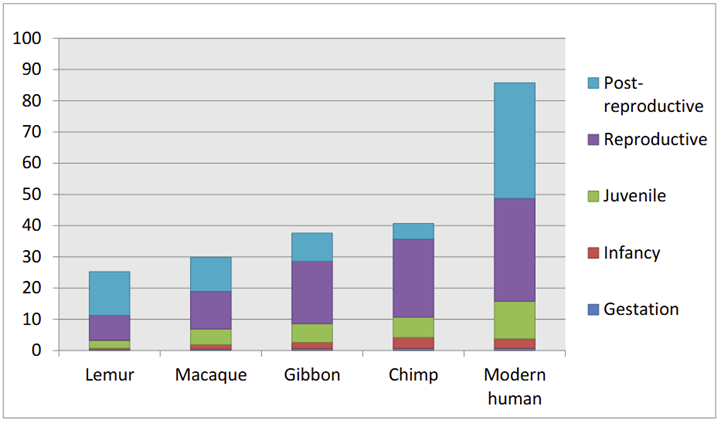Demography, genetics, and evolution
1/17
There's no tags or description
Looks like no tags are added yet.
Name | Mastery | Learn | Test | Matching | Spaced |
|---|
No study sessions yet.
18 Terms
Life history
The way organisms time and allocate limited energy to growth, reproduction, and maintenance
Life history theory
Theory that aims to explain the differences in life histories across species
Life history traits
Traits that determine survival and reproduction (fitness) and therefore adaptation by natural selection (evolution), which vary between species and populations
Life history trade-offs
Sacrificing/reducing one trait to increase another, and the fitness benefit must outweigh the fitness cost
Dual inheritance theory
The combination of biological (genetic material, passed down by 2) and cultural inheritance (culturally defined activities and values, resources, continuously passed down by many), the coevolution of biology and culture
Which of the evolutionary forces are demographic?
Natural selection (mortality, fertility)
Gene flow (migration)
Genetic drift (pop size and density)
Mutation isn’t directly related but population size can influence frequency
What do all theories related to the evolution of life history traits involve?
The interaction between genes and demographic rates
What are the seven life-history variables?
Metabolic needs, age at maturity, gestation length, litter size, interbirth interval, lactation period, longevity
What can life history trade-offs be between and what are two examples?
Life history trade-offs can be between current reproduction and survival, number and size of offspring, current reproduction and parental condition, etc
The obstetric dilemma and the grandmother hypothesis are examples
What are the three forces of dual inheritance theory?
Guided variation, biased transmission, and natural selection
What is the first feature of dual inheritance theory?
Cultural selection pressures may lower genetic fitness, and all species are supposed to be trying to maximise reproductive success
But cultural selection for status = reduced fertility, assuming socioeconomic success is negatively correlated with family size
What is the second feature of dual inheritance theory, and what is an example?
Recognition of cultural group selection arising from frequency-dependent (conformist) decision-making forces
Under certain conditions, cooperators are more fit, benefit to group outweighs individual cost
An example is the sepaade, where some were prevented from marrying (and so reproducing), which was good for the community but bad for the individual
People also have agency and can change systems for their benefit
How does the life history of humans differ from other apes?
Humans have a longer dependent childhood and a longer post-reproductive period that is about as long as the reproductive period (especially for women)
How did Caspari & Lee investigate the evolution of human life history?
They looked at how many people lived to be old using dental/skeletal data from European Neanderthals and Palaeolithic modern humans, and found more humans lived to be old (and potentially be grandparents)
Why did Caspari & Lee look at relative age, not exact age?
Determining exact age is difficult and not very reliable
How does the evolution of grandparents relate to population size and the evolution of culture?
People living older increases population size, which is linked to accelerated evolution, the development of new behaviours, trade networks, complex systems, and material expressions of identity
These increase population, creating a positive feedback process
What are three other reasons grandparents are important for humans?
They contribute economic and social resources, increasing reproduction and survival of children
They reinforce complex social connections
They transmit cultural knowledge, wisdom and experience, technology

What does this graph depict?
Human life-history and life stages compared to other apes